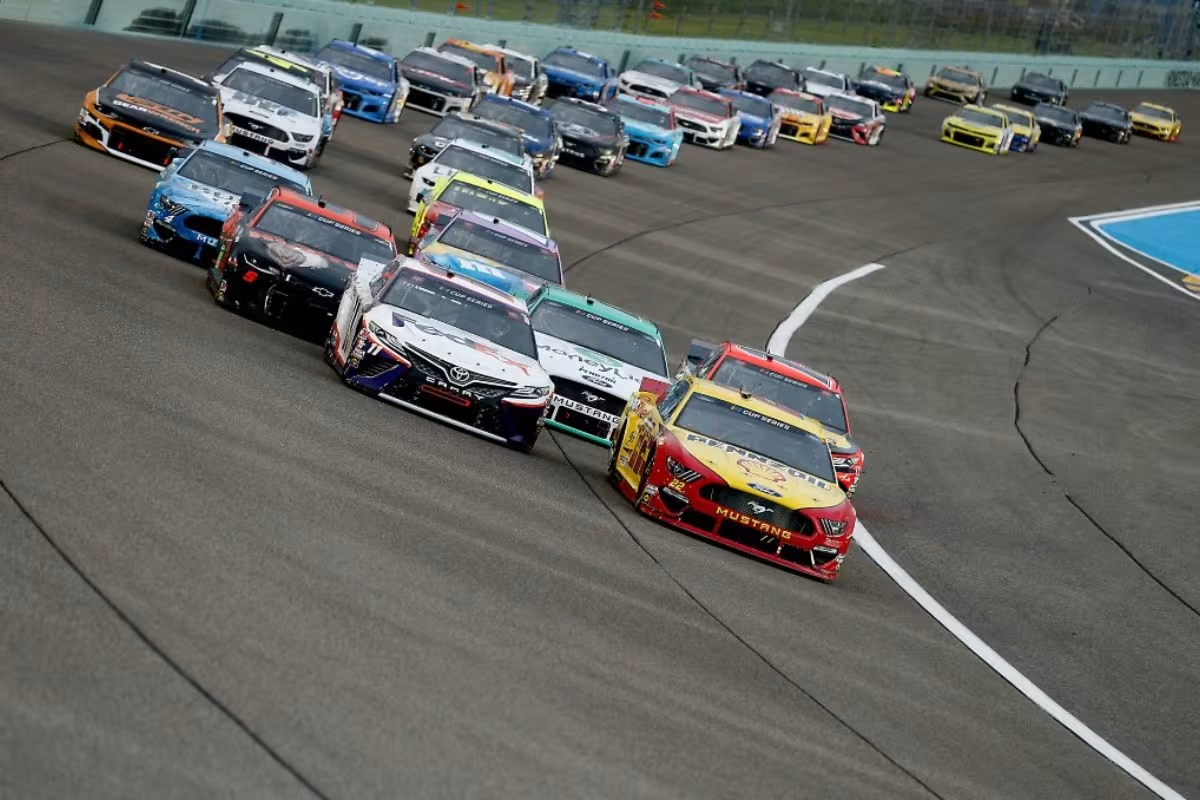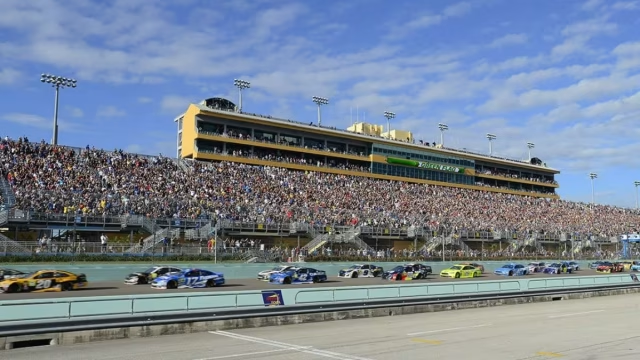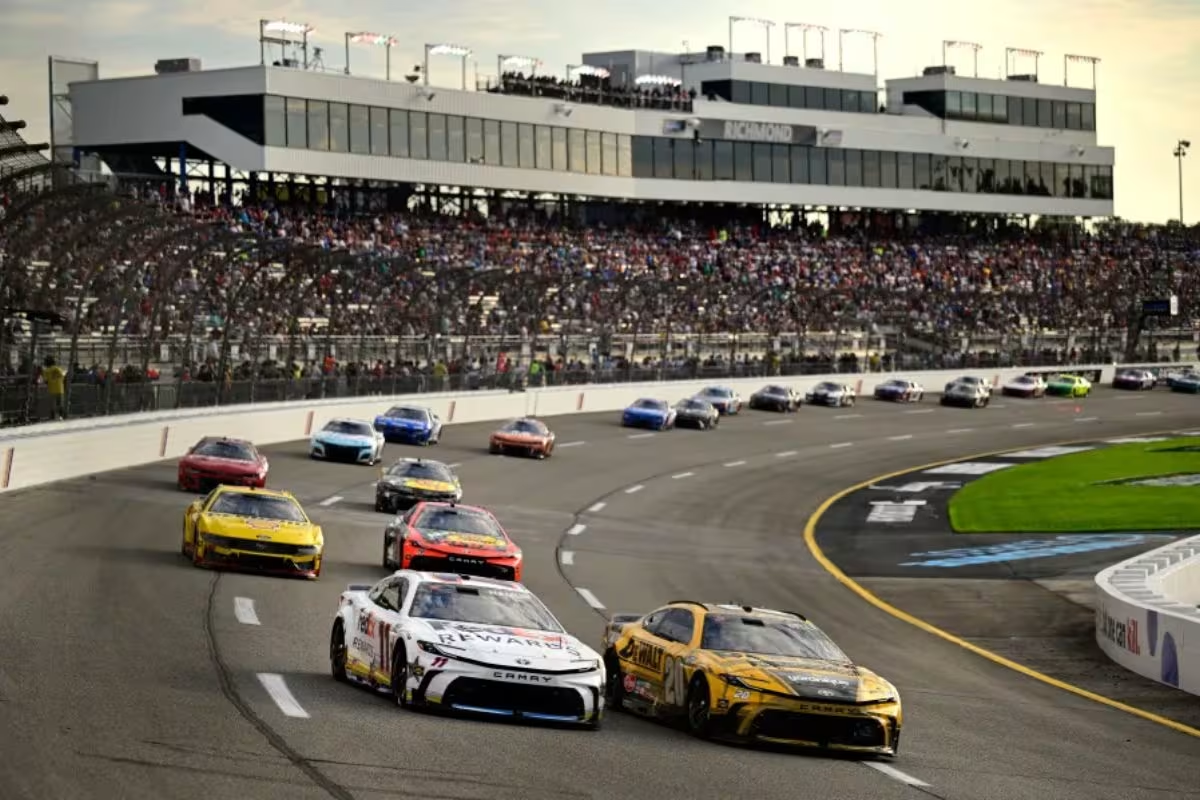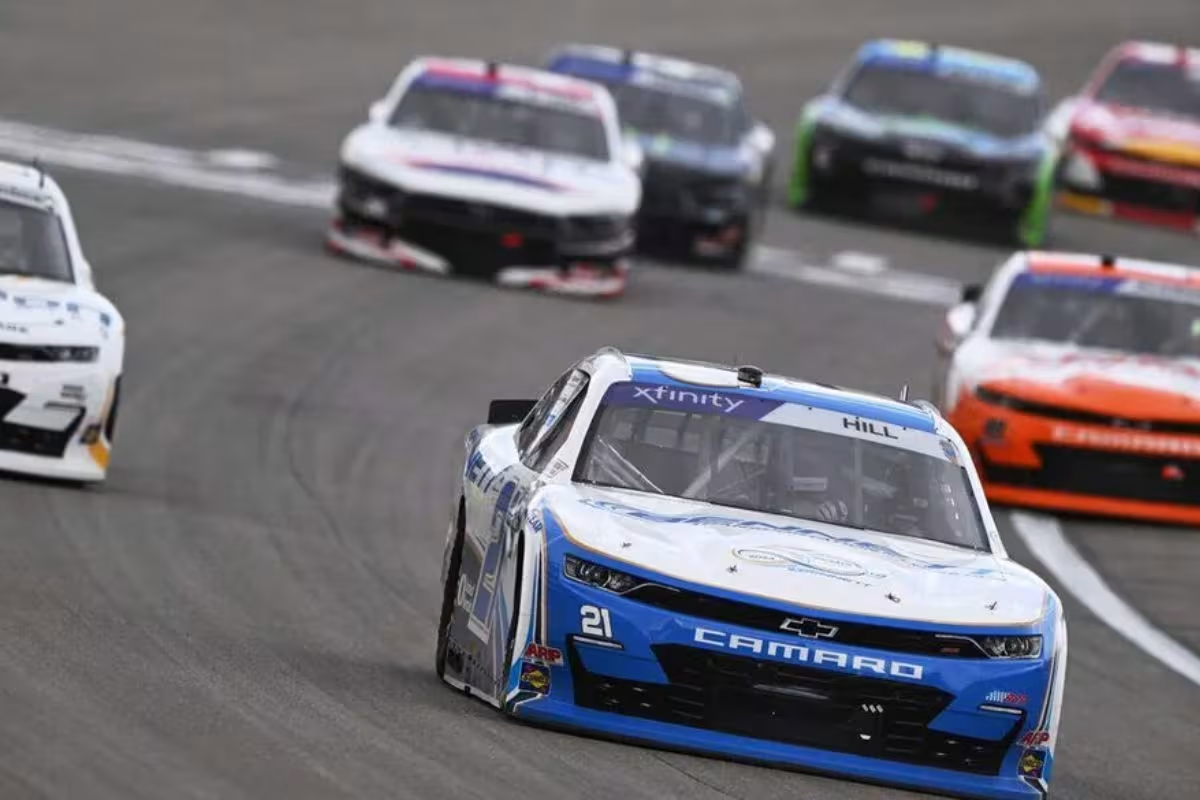Who Rules Homestead-Miami Speedway: Homestead-Miami Speedway, a key site in NASCAR history, has seen remarkable drivers claim dominance. Tony Stewart, Greg Biffle, and Denny Hamlin have each secured three victories, showcasing their exceptional skills. Tony Stewart’s back-to-back wins in 2011 highlighted his expertise, while Greg Biffle’s consecutive successes from 2004 to 2006 illustrated tactical excellence. Denny Hamlin’s ability to adapt over the years, with wins spanning from 2009 to 2020, adds depth to his legacy. The competitive landscape extends to team achievements, with Joe Gibbs Racing leading the charge.
Key Highlights
- Tony Stewart, with three wins, showed remarkable skill, including back-to-back victories in 2011 at Homestead-Miami Speedway.
- Greg Biffle dominated early 2000s, securing three consecutive wins from 2004 to 2006, highlighting his tactical prowess.
- Denny Hamlin has achieved three victories, demonstrating adaptability and longevity in the competitive landscape of NASCAR.
- Joe Gibbs Racing leads with nine Cup victories at the speedway, showcasing their sustained excellence and strategic advantage.
- The track has seen 13 different winners in 25 races, emphasizing its unpredictability and the competitive nature of drivers.
Event Overview and Track Details
As the NASCAR Cup Series gears up for the Straight Talk Wireless 400 at the Homestead-Miami Speedway, anticipation builds for what promises to be a significant race in the playoffs. This event marks the third race in the final round of the postseason, amplifying the stakes for drivers vying for the championship.
The Homestead-Miami Speedway, located in Homestead, Florida, is a 1.5-mile intermediate track renowned for its challenging layout and unique banking configurations. The track features variable banking, ranging from 18 to 20 degrees in the turns, which allows for a diverse range of racing lines and strategies. In contrast, the front and back stretches maintain a flatter profile with only 3 degrees of banking, demanding precision and skill from drivers as they navigate the shift between speed and control.
The fiesta is just getting started, it's race week!#StraightTalkWireless400 | #CONACC300 | #BaptistHealth200
— Homestead-Miami Speedway (@HomesteadMiami) October 21, 2024
This combination of characteristics makes the Homestead-Miami Speedway a true test of a driver’s ability to adapt and excel under stress. Historically, this venue has been a stage for dramatic finishes and high-stakes battles, further heightening the event’s appeal. Teams must balance the need for speed with the tire management essential for success on this abrasive surface.
As competitors prepare for the NASCAR race, understanding the intricacies of the Homestead-Miami Speedway will be paramount in determining who emerges victorious. With the championship implications looming, drivers must utilize their expertise and experience to conquer this critical race in the NASCAR Cup Series playoffs.
Historical Context
The Homestead-Miami Speedway has carved a notable niche in NASCAR history since its inaugural Cup Series race in 1999. This relatively recent addition to the NASCAR landscape has quickly become a considerable venue, showcasing a blend of competitive spirit and technical skill characteristic of the series. The initial race saw NASCAR legend Tony Stewart clinch victory in the 46 Pontiac for Joe Gibbs Racing, setting the stage for future legends to etch their names into the track’s lore.
Although the history of the Homestead-Miami Speedway is not as extensive as other venues, its impact is undeniable. Over the course of 25 NASCAR Cup races, a diverse roster of 13 different drivers has successfully crossed the finish line, highlighting the unpredictable nature of the sport. This variety of winners reflects the track’s unique challenges and the evolving strategies teams deploy in pursuit of success.
The speedway’s 1.5-mile layout contributes to its reputation as a test of both endurance and skill, demanding that drivers master high-speed turns while managing tire wear—an important element in the race strategy.
With its backdrop of vibrant Miami culture and the growing fan base, the Homestead-Miami Speedway has become synonymous with the excitement of NASCAR.
Notable Drivers and Wins
Within the competitive landscape of NASCAR, certain drivers have emerged as dominating forces at the Homestead-Miami Speedway, leaving an indelible mark on the track’s history. Among these luminaries, Tony Stewart, Greg Biffle, and Denny Hamlin stand out as the most successful drivers, each boasting three victories in Cup Series competition at this unique venue.
Stewart’s skill is particularly remarkable, as he clinched back-to-back wins in 2011, showcasing his ability to navigate the track’s challenges with precision and talent.
Biffle’s dominance is similarly impressive, having achieved three consecutive victories from 2004 to 2006, a demonstration of his consistency and tactical insight during that period. His ability to adapt to evolving race conditions solidified his legacy at Homestead.
Another opportunity to make the #Championship4. Who wants it most? pic.twitter.com/l4Cx7cxf6T
— NASCAR (@NASCAR) October 23, 2024
Denny Hamlin, an active competitor, initially succeeded at Homestead in 2009 and secured his most recent victory in 2020, illustrating not only his longevity in the sport but also his adaptability to the track’s subtleties over the years.
Remarkably, among active NASCAR Cup drivers, Kyle Busch trails closely with two victories, indicating a competitive spirit and potential for future success at this storied venue.
The combination of these drivers’ exceptional skills and tactical insights has rendered them formidable opponents at Homestead-Miami Speedway, creating a legacy that continues to inspire both fans and aspiring drivers similarly.

Team and Manufacturer Achievements
Building on the impressive individual achievements of notable drivers, team and manufacturer accomplishments at Homestead-Miami Speedway further highlight the competitive dynamics of NASCAR.
Joe Gibbs Racing (JGR) stands out with an unmatched nine NASCAR Cup victories at this 1.5-mile track. Their wins, spanning from 1999 to 2023, emphasize a sustained excellence that has established JGR as a formidable force in the sport. This consistent performance not only reflects the team’s tactical insight but also their ability to adapt to the evolving demands of competition.
In contrast, RFK Racing, with seven wins, demonstrates the diversity of competitive success in the series, indicating that multiple teams can excel at this challenging venue. The rivalry among teams is further echoed in the manufacturer statistics; Ford leads with eight victories, followed closely by Toyota and Chevrolet, each with seven. This multi-manufacturer landscape reveals a rich tapestry of engineering skill and team collaboration, crucial for achieving success at such a demanding circuit.
As the Straight Talk Wireless 400 approaches, the presence of seven past winners in the field, including Christopher Bell, the defending champion, adds an exciting layer to the race dynamics.
News in Brief: Who Rules Homestead-Miami Speedway
The Homestead-Miami Speedway has witnessed a myriad of dominant drivers who have shaped its competitive landscape. Through a thorough examination of historical context, notable wins, and team achievements, it becomes evident that certain individuals and organizations have left an indelible mark on this venue.
The legacy of these elite competitors not only highlights their exceptional skills but also emphasizes the evolving nature of motorsport, reflecting broader trends within the NASCAR series and the automotive industry.
ALSO READ: Homestead-Miami Speedway: A Rollercoaster of Emotions for NASCAR’s Finest


